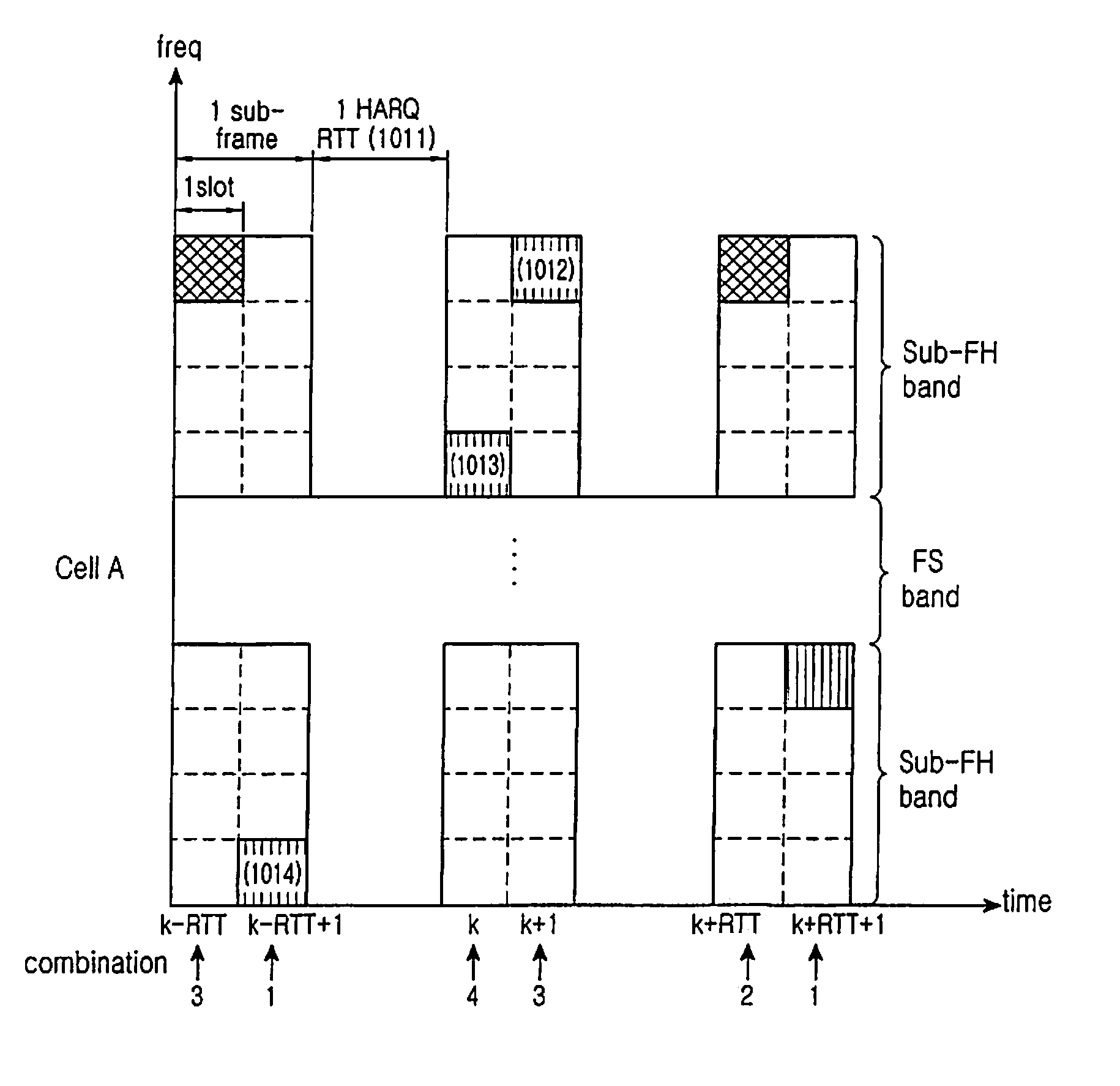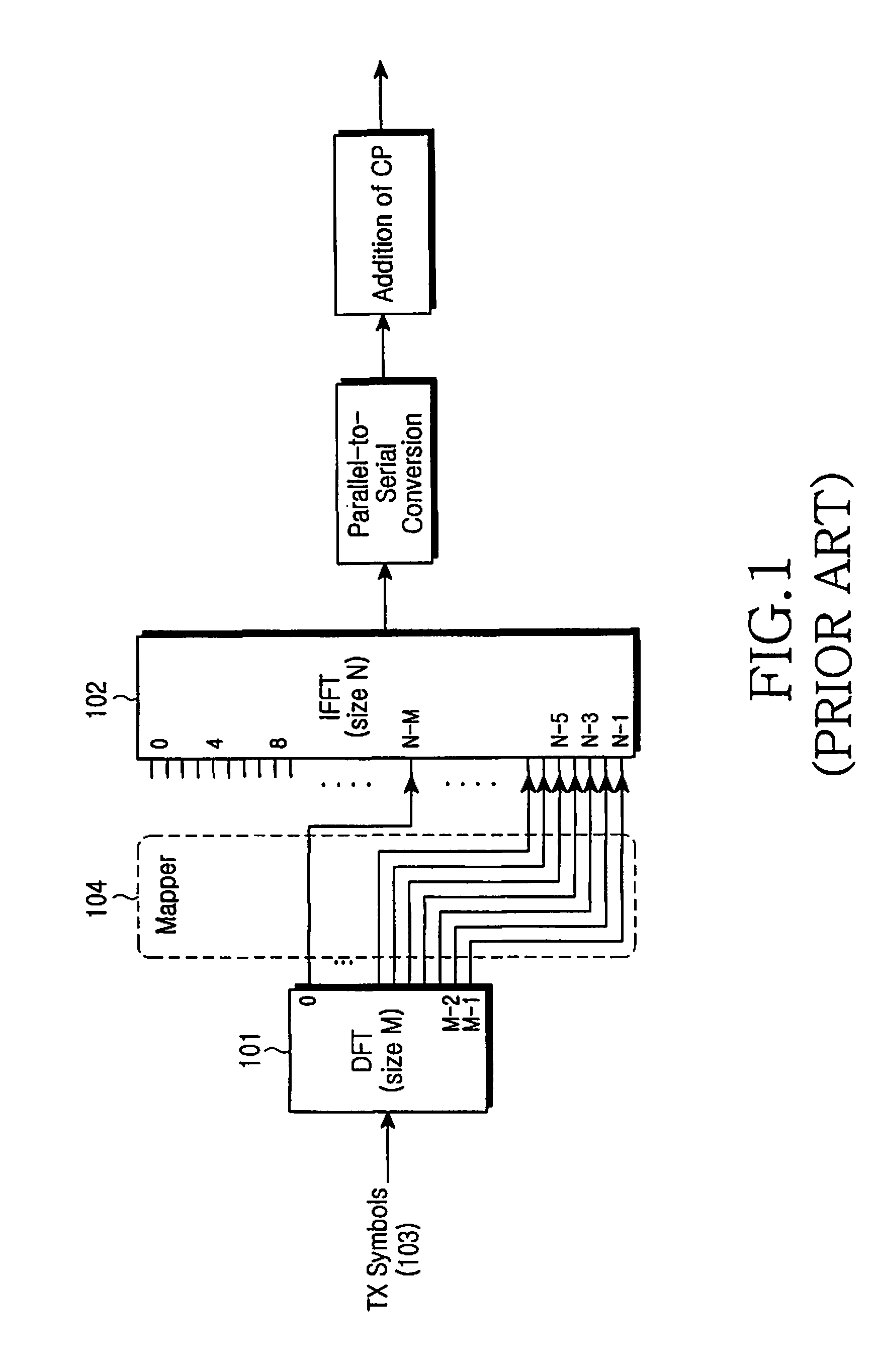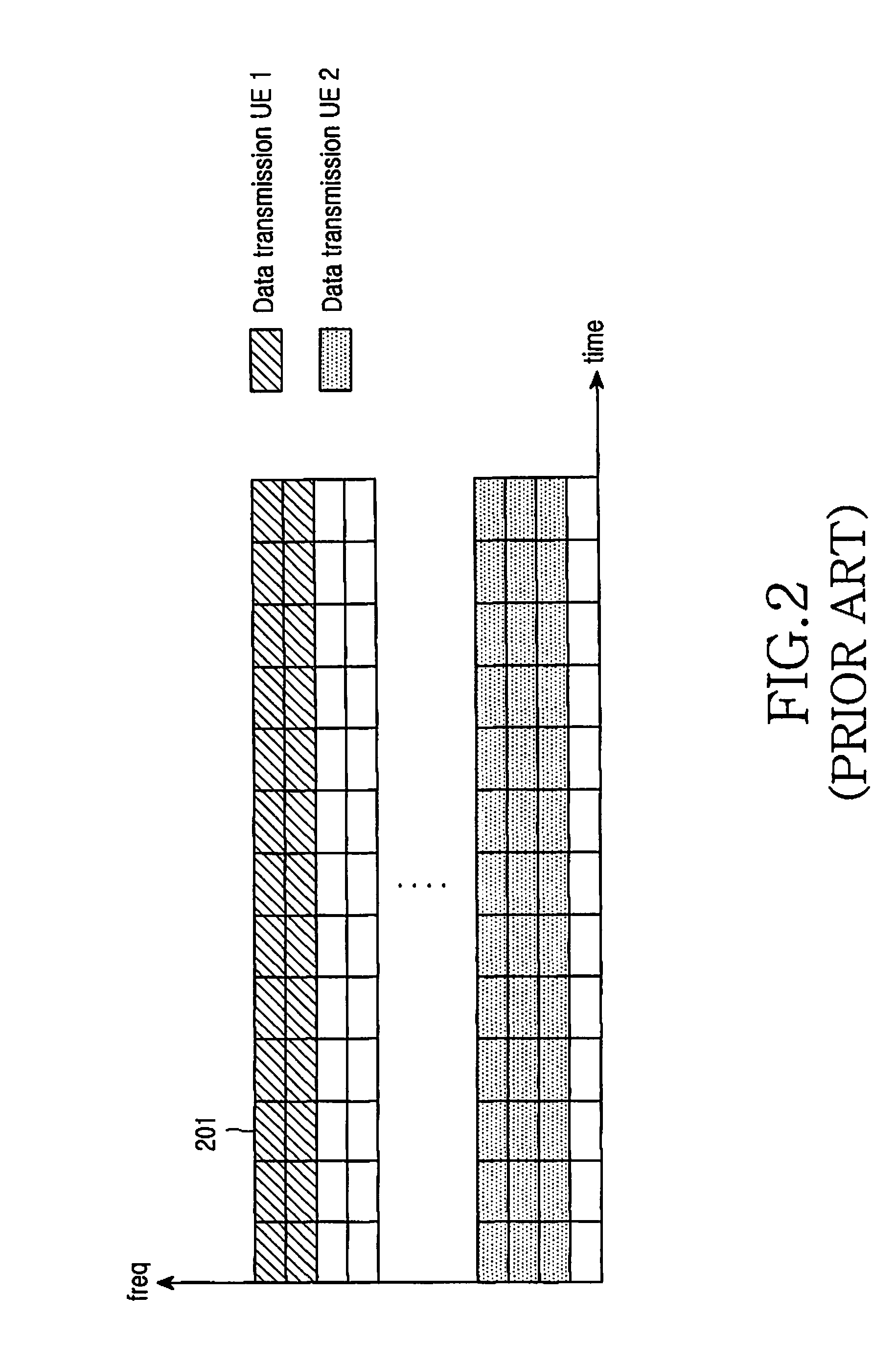Apparatus and method for allocating resources in a single carrier-frequency division multiple access system
a technology of multiple access system and carrier frequency division, applied in electrical equipment, digital transmission, wireless commuication services, etc., can solve the problems of difficult frequency selective scheduling, inability to ensure a relatively good channel status of the ue, and ineffective frequency selective scheduling
- Summary
- Abstract
- Description
- Claims
- Application Information
AI Technical Summary
Benefits of technology
Problems solved by technology
Method used
Image
Examples
embodiment 1
[0050]Embodiment 1 provides a method for turning mirroring on or off according to a different mirroring on / off pattern for each cell. Using different mirroring on / off patterns for different cells as much as possible and decreasing the probability of mirroring-on in cells at the same time maximize the effect of randomizing interference between cells.
[0051]FIGS. 5A and 5B illustrate a method according to the first embodiment of the present invention. FIG. 5A illustrates slot-based mirroring irrespective of HARQ and FIG. 5B illustrates independent mirroring for each HARQ process.
[0052]Referring to FIG. 5A, there are cells 501 and 502 (Cell A and Cell B). As intra-subframe hopping is assumed, the hopping period is a slot. On a slot basis, mirroring is performed at each hopping time in a pattern 503 of on, on, on, off, on, off, off, off . . . in Cell A, and in a pattern 512 of on, off, on, on, off, off, on, on, . . . in Cell B.
[0053]In Cell A, an RU 504 is allocated to UE A at a hopping ...
embodiment 2
[0068]Inter-sub-FH band hopping on / off is combined with mirroring on / off and the position of an RU for data transmission is determined by selecting one of the combinations such that each cell has a different pattern. That is, the resources of a total system frequency band are divided into an FH band and an FS band, and a channel structure which offers a sufficient frequency hopping gain in the FH band and achieves a sufficiently available frequency band in the FS band is disclosed.
[0069]FIG. 9 illustrates the channel structure according to the second embodiment of the present invention.
[0070]Referring to FIG. 9, sub-FH bands 901 and 903 are defined at either side of a total frequency band and the center frequency band between the sub-FH bands 901 and 903 is defined as an FS band 902. UEs using the FS band 902 can hop to the sub-FH bands 901 and 903, thereby achieving a sufficient frequency hopping gain. As the frequencies of the FS band 902 are successive to maximize successive freq...
embodiment 3
[0087]FIG. 12 illustrates a channel structure according to a third embodiment of the present invention.
[0088]For a system where a plurality of sub-FH bands exist as illustrated in FIG. 12 and hopping always occurs between the sub-FH bands, a method is disclosed for determining mirroring on / off according to a different pattern for each cell. The use of different mirroring on / off patterns for different cells decreases the probability of performing mirroring at the same time in the different cells, thus resulting in maximized randomization of inter-cell interference.
[0089]FIGS. 13 and 14 illustrate a method according to the third embodiment of the present invention. Specifically, FIG. 13 illustrates a mirroring method independent of HARQ and FIG. 14 illustrates a method for performing mirroring on an HARQ process basis.
[0090]Referring to FIG. 13, since it is assumed that both cells 1301 and 1311 (Cell A and Cell B) support intra-subframe hopping, the hopping period is a slot. Mirroring...
PUM
 Login to View More
Login to View More Abstract
Description
Claims
Application Information
 Login to View More
Login to View More - R&D
- Intellectual Property
- Life Sciences
- Materials
- Tech Scout
- Unparalleled Data Quality
- Higher Quality Content
- 60% Fewer Hallucinations
Browse by: Latest US Patents, China's latest patents, Technical Efficacy Thesaurus, Application Domain, Technology Topic, Popular Technical Reports.
© 2025 PatSnap. All rights reserved.Legal|Privacy policy|Modern Slavery Act Transparency Statement|Sitemap|About US| Contact US: help@patsnap.com



